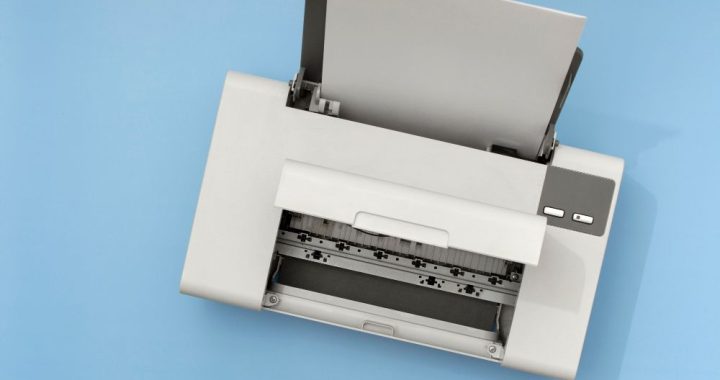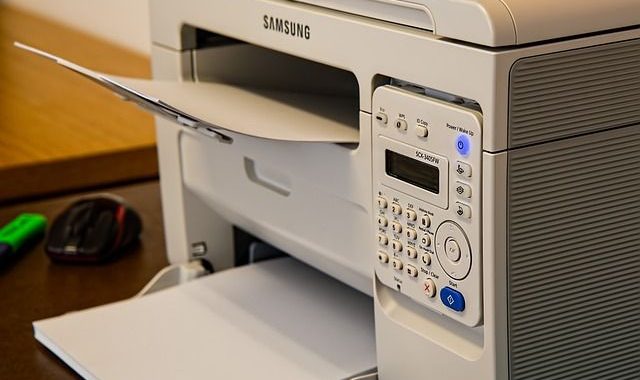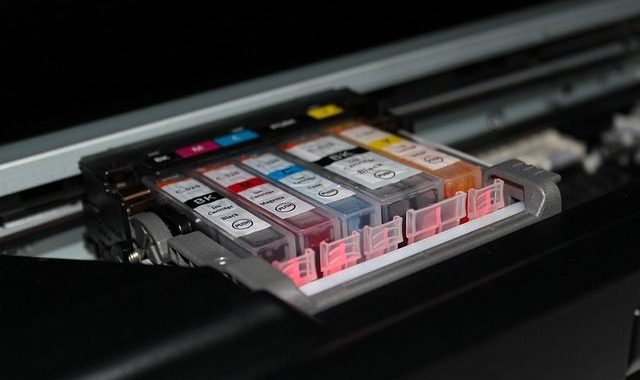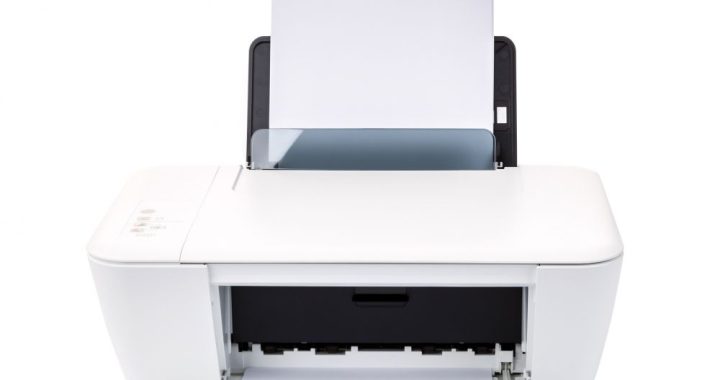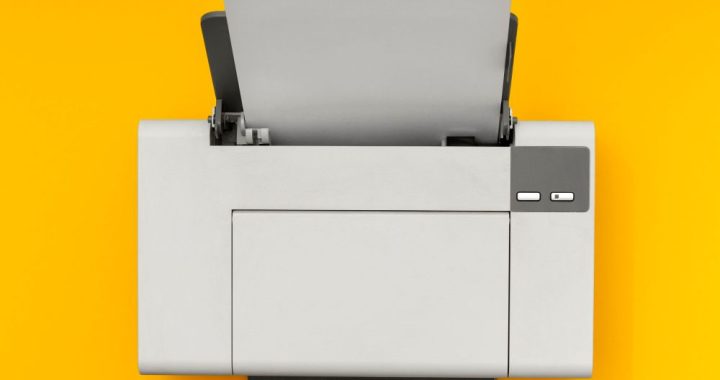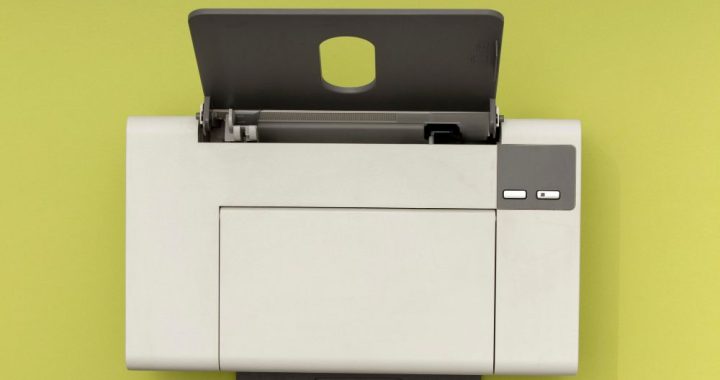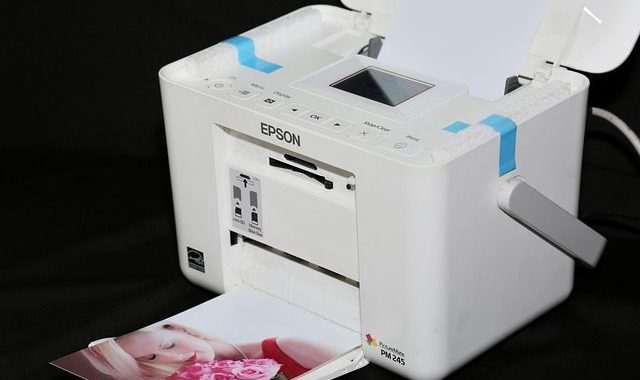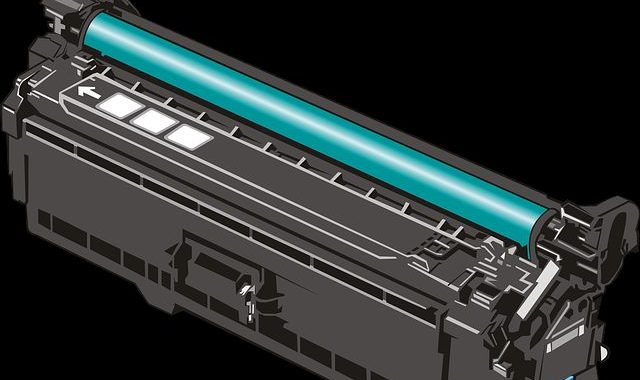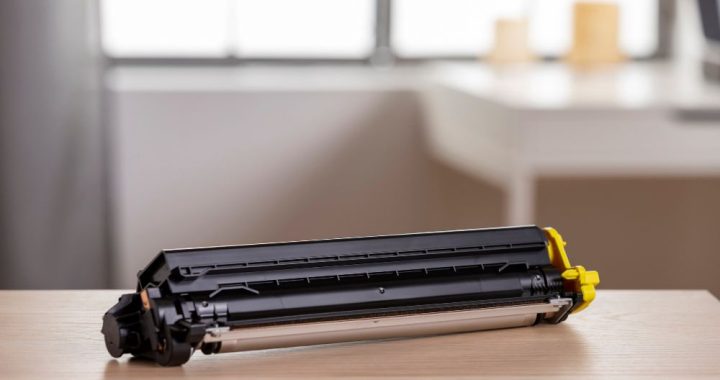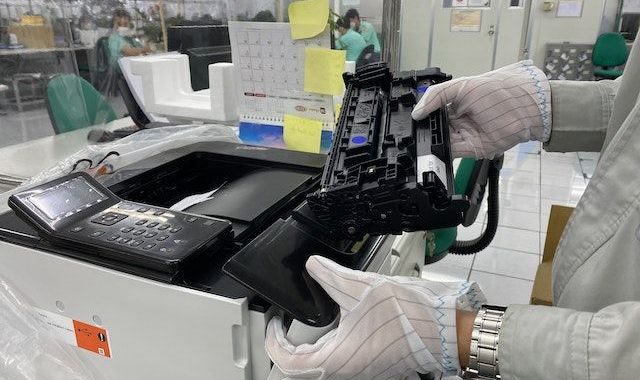Laser printer cartridges hold the powder used to create printed images and text. This powder is a dry, fine plastic powder that melts when exposed to heat. Laser printer cartridges contain several components, including an imaging drum, which is responsible for transferring the powder to the paper.
Other important parts of the cartridge are the wiper blade, which helps to spread the powder evenly on the image drum; the primary corona wire and the secondary charger wire, which create an electrical charge that attracts the powder to the paper; the heater assembly, which heats the powder so that it permanently melts on the paper; and the cleaning roller and the waste hopper, which help to keep the excess powder off the image drum.
To maintain optimal performance, laser printer cartridges should be replaced regularly according to the manufacturer's instructions. Over time, the cartridge will begin to lose its ability to properly transfer and fuse the powder to the paper, resulting in poor print quality. In addition, a clogged or dirty cartridge can cause paper jams or streaks in the printed output. To avoid these problems, it is important to clean the cartridge regularly and replace it if necessary. With proper maintenance of your laser printer cartridges, you can enjoy high quality prints for many years.
Category Archives: Kasečių pildymas, naujienos
How to extend the life of your laser printer cartridges
1. Make sure they are stored in a cool, dark place, away from direct sunlight and other sources of heat or moisture.
2. Keep the cartridges sealed in their original packaging until you intend to use them.
3. Store the cartridges in a dry, dust-free environment free from extreme temperatures or sudden temperature changes.
4. Avoid subjecting the cassettes to any kind of impact, such as dropping them or hitting them on a hard surface.
5. When storing cartridges for a long period of time, make sure to write the date of purchase on the cartridges so that you know how old they are when you use them.
6. If possible, store the cartridges in their original boxes with additional cushioning material to provide extra protection against shock or temperature changes.
By following these storage tips, you can extend the life of your laser printer cartridges and save money in the long run. With proper care and handling, your cartridges will last longer and produce better quality prints. So take the time to make sure your cartridges are stored properly and you will be rewarded with years of reliable printing.
Remember that cartridges bought from a shop may come with a warranty or guarantee, so it is important to contact the manufacturer as soon as possible if you have any problems using them. If you have purchased refilled cartridges, it is still important to store them properly to ensure they last as long as possible. Taking a little extra care with your laser printer cartridges can help you get even more out of them!
Laser printer cartridges
Laser printer cartridges come in a variety of types, sizes and colours to suit the needs of any laser printer user. There are several factors to consider when choosing the right cartridge for your printer.
The first thing to consider is compatibility. Make sure that the cartridge you are buying is compatible with the specific printer model. If you are not sure which type is best suited to your device, check the product description or ask the manufacturer for help.
When buying a cartridge, it is important to consider the speed and quality of the device. Many laser printer cartridges have different speeds and resolutions, depending on the brand and model. Please pay attention to this when purchasing to ensure the best results.
It is also useful to consider the cost of the printer cartridge. Higher-end models tend to be more expensive, but can offer better print quality and faster speeds than cheaper cartridges. If possible, look for offers and discounts when buying in bulk or for specific brands of cartridges.
Finally, note the expected page yield. Most cartridges give an estimate of the number of pages they can print before they need to be replaced. Keep this in mind if you plan to print frequently or for long periods of time, as this can have an impact on overall costs and efficiency.
With so many laser printer cartridges available, finding the right one for your printer can be difficult. When choosing, be sure to consider all the factors listed above to ensure the best results.
In addition, if you are not sure which cartridge is compatible with your printer, it is always recommended to contact the manufacturer directly for assistance. They will be able to give you the best recommendations on which type of cartridge is compatible with your printer and provide you with more information on its features, performance and price. With a little research and the manufacturer's recommendations, choosing the right laser printer cartridge should be easy!
Types of laser printer cartridges
Laser printer cartridges come in two types: toner and drum. Toner cartridges contain a special powder that is heated to create images printed on paper. They are usually black, but can also be coloured such as cyan, magenta and yellow. Toner cartridges are usually more expensive than drum cartridges and need to be replaced more often.
Drum cartridges contain a light-sensitive drum that produces images printed on paper. The drum is usually made of plastic and needs to be replaced every few hundred pages printed. Drum cartridges are generally cheaper than toner cartridges, but may need to be replaced more frequently depending on the number of pages printed.
It is important to use the right type of cartridge for your printer. Using the wrong type of cartridge can damage the printer and produce poor quality prints. It is also important to make sure that you use cartridges that are made specifically for your printer model, as generic or non-nuclear cartridges may not work properly with certain printers. By following these steps, you can ensure that your prints look great every time.
What can happen if you try to insert the wrong printer cartridge
If you try to insert the wrong printer cartridge, you could permanently damage your printer. The wrong cartridge can be inserted incorrectly and can get stuck. If you force the wrong cartridge into place, you risk damaging sensitive components of the printer. This can cause the printer to malfunction or even stop working altogether. In addition, using an incompatible cartridge can result in poor print quality. Ink and toner cartridges are designed for use with specific printers, so it is very important to buy the right cartridge for your printer. Failure to do so could result in a costly repair bill or even a completely damaged device.
To avoid these problems, always make sure you buy a cartridge that is compatible with your printer. Check the specifications carefully and do not be tempted. If you are not sure, seek help from a reputable dealer or manufacturer. Finally, be sure to store cartridges according to the manufacturer's instructions, as improper storage can also cause damage and malfunction. With a little care, you can ensure that your printer stays in tip-top condition and produces excellent results.
Remember, if you are ever in doubt about which cartridge your printer needs, it is always best to consult a reputable dealer or manufacturer. Taking the time to make sure you have the right cartridge for your device can save you money and frustration in the long run. Happy printing!
What are the problems with replacing a printer cartridge
The most common problems encountered when replacing a laser printer cartridge are:
1. Cartridge not recognised: the printer may not recognise a new or refilled cartridge, which can lead to printing errors. To resolve this issue, users should try cleaning the cartridge contacts, as well as checking that they have inserted the cartridge correctly into its place.
2. The printer will not accept cartridges.Due to compatibility issues, the printer may not accept a new or refilled cartridge. To resolve this issue, users should check that they are using the correct type of cartridge for their printer model, and that all cartridges and printer connections are secure.
3. Installation problems: If the printer is not installed or configured correctly, you may have problems loading cartridges. To resolve this problem, users should check that their printer driver is up-to-date, and make sure that all connections between the cartridge and the printer are secure.
4. Poor print quality: poor print quality can be caused by low-quality cartridges. To resolve this problem, users should try using a different brand or type of cartridges, and make sure they are using the correct printer settings.
5. Ink leakage: loose parts or incorrect installation can cause ink to leak from the cartridge. To solve this problem, users should make sure that all components of the cartridge are properly assembled and that the cartridge is securely attached.
6. Clogged cartridge: the cartridge may be clogged due to accumulated debris or dirt. To resolve the problem, users should clean the printheads and try a different brand or type of cartridge.
7. Printer not accepting page commands The printer may not accept print commands due to outdated software or settings. To resolve this issue, users should update the printer driver and check that the correct settings are enabled on the printer.
8. Printer error messages:The printer may display various error messages when accepting a new or refilled cartridge, such as cartridge not recognised or incompatible cartridge. To resolve this issue, users should check that the cartridge is compatible with their printer model and ensure that all cartridge and printer connections are secure.
By understanding these common problems, users can avoid them when replacing their laser printer cartridge, ensuring an optimal printing experience.
How to get the best print quality
When printing, it is important to use the right type of paper. Different types of paper produce different print quality and have different effects on the colours and images printed. In general, thicker paper provides better print quality as it does not warp or distort due to the heat emitted by the printer. Thicker paper also absorbs more ink, which helps to produce vibrant colours and sharp lines.
When choosing paper for a project, it is best to choose paper that is made specifically for the type of printer being used. Most printers come with instructions explaining what types of paper are compatible with them. It is always best to follow these instructions carefully, as incompatible paper can result in poor print quality or even damage to the printer itself. In addition, the use of photo paper can help to achieve the best print quality, especially when printing images or photos.
It is also important to consider the texture of the paper used. Smooth paper is better suited for projects that need clear lines and graphics, while textured paper is good for photos as it helps to bring out details. Finally, some more specialised types of paper, such as cardboard and waterproof paper, may be needed for certain projects.
By following these tips and using the right type of paper, you can achieve the best possible print quality for any project. For projects that require high quality prints, it may be useful to seek professional help from a local printing company that can ensure optimal results.
Why you should replace an old laser printer cartridge with a new one
Replacing an old laser printer cartridge with a new one can offer several advantages. Firstly, it ensures that prints remain clear and consistent, as outdated cartridges can result in poor quality prints with smudges and spots. Secondly, newer cartridges offer greater printing efficiency - they are designed to save you time and money by taking less time to warm up than their older counterparts. Finally, the newer cartridges contain more toner, so you get more prints for your money. So not only do you get better quality prints, but you also get much better value for money! All these advantages make it worth investing in replacing your old laser printer cartridge with a new one. It is therefore important to take your time to check whether your cartridges are up-to-date and to replace them if necessary. Doing so will save you time and money in the long run, and help you enjoy a better printing experience. So make sure you invest in replacing your old laser printer cartridge with a new one for maximum satisfaction. That way you can get the most out of your printing. You'll also have the confidence to print more documents, confident that they'll come out clearly and professionally. By replacing your used cartridges with new ones, you can get the best print quality!
Why you need to remove the protectors on your new printer cartridge
Remove the protectors from the new printer cartridge - this is an important step in setting up the printer. Failure to remove these protectors may result in the printer not working properly or not at all. There are several reasons why you should remove the guards before use:
Firstly, it ensures that the cartridge nozzle does not clog up. The guards are designed to keep dust and other particles out of the cartridge, but when they are left in place they can lead to poor print quality or even no print at all.
Secondly, when the guards are removed, the printer senses that a new cartridge has been inserted. Many printers use optical sensors to detect when a new cartridge has been inserted. If the guard is still in place, the printer may not recognise that a new cartridge has been inserted and may not work properly.
Finally, once the guards are removed, the printer can start the cleaning cycle. This helps to keep the printer clean and ensures good print quality.
In summary, it is essential to remove the protectors from the new printer cartridge to ensure optimal printer cartridge performance. This helps to ensure that the printer functions properly and produces high quality prints. This simple but important step will only take a few seconds before setting up the printer.
By following these steps, you can be sure that your printer is set up correctly and will be able to print reliably for many years.
Inserting a new cartridge
Here are some tips on how to insert a new cartridge:
1. Unpack the cartridge carefully - be sure to read all the instructions before working with a new cartridge. Make sure you do not damage the cartridge when removing it from the packaging.
2. Check compatibility - Before inserting a new cartridge, make sure it is compatible with your printer model. This information can usually be found online or on the box.
3. Prepare the printer - Before doing so, switch off and disconnect the printer from the mains. Remove all existing cartridges and prepare the installation space for the new cartridge.
4. Install the cartridge - Install the new cartridge according to its instructions and make sure it fits. Start the printer to make sure it is working properly.
5. Perform maintenance - Once a new cartridge has been installed, it is important to carry out regular maintenance to keep it running smoothly. Clean it regularly and check it for possible wear and tear or damage. This will help ensure that the cartridge remains in good condition and that the printer runs efficiently.
6. Handle the cassette with care - it can be easily damaged if dropped or stored incorrectly. Do not store it in extreme temperatures and make sure it is protected from direct sunlight. Store the printer and cartridge in a clean, dry environment to avoid any damage.
By following these steps, you can ensure that the new cartridge is properly inserted and functions optimally. Proper maintenance of the printer and the cartridge is essential to ensure optimum performance. Happy printing!

